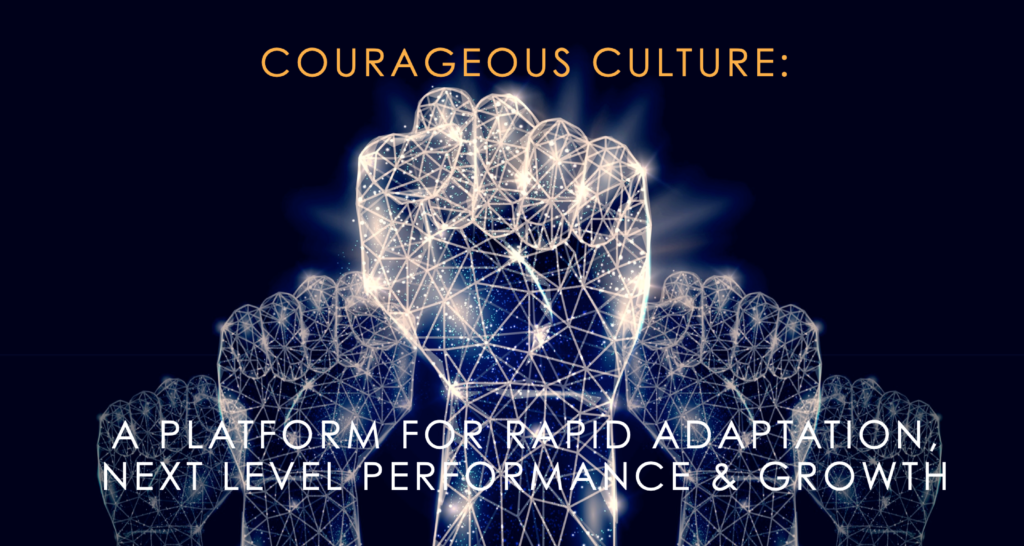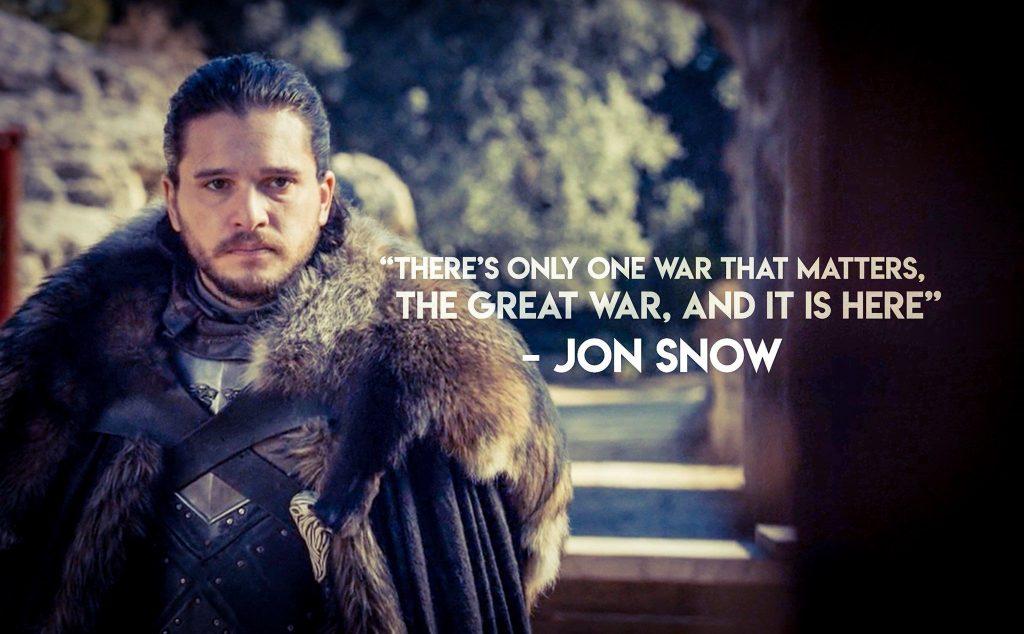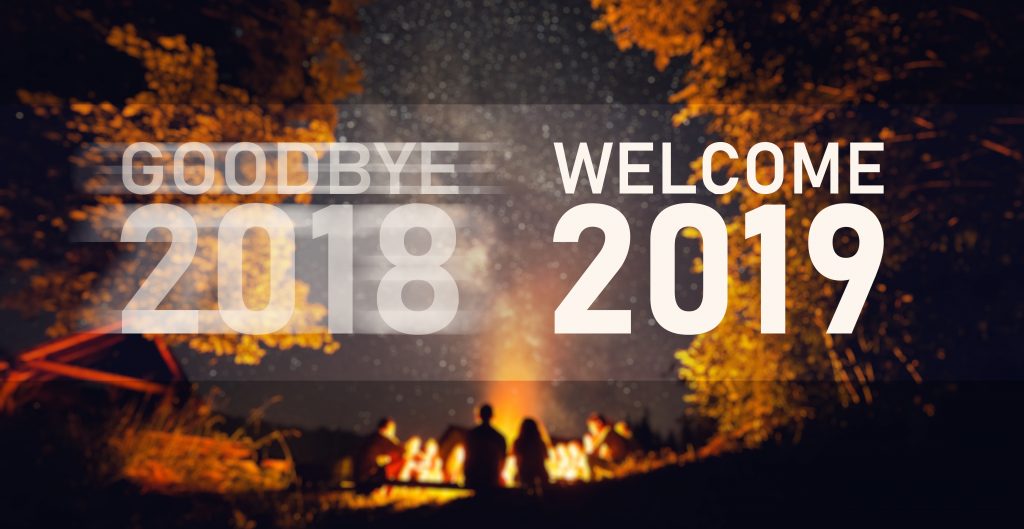
CHANGE IS A CHRONIC CONDITION
THREE SOFT SKILL PRIORITIES THAT EFFECTIVELY
TREAT THE LEADER (WITH THE CONDITION) VS.
TREAT THE CONDITION (IN THE LEADER)
Some of us are more successful than others in the face of the change epidemic that we find ourselves in. Most of us leaders orient to change and transformation with the wrong mindset and a limited, outdated set of tools. All of us are pretty late, though, with regard to following the most effective treatment. Nevertheless, thank you, Thomas Friedman and each one of you reading this. “Thank you for being late”(versus choosing not to show up at all). Late means you are here alongside the rest of us. I’m glad you are here. We may have a long way to go before we get clear on why we are here, but we are beginning to see that your treatment is bound up with mine, so let’s get serious and work together.
Here’s a perspective on the good news, the bad news, the reality, and a more effective treatment.
THE GOOD NEWS
Now that we are learning to address change more seriously, moving beyond mere coping strategies, we see its full and exigent nature. Change isn’t a “problem” to cure, a challenge to beat, or a phase to get past. Change is a persistent, unstoppable, chronic condition(the 21st-century lifestyle) that we will always have to live with and embrace.
Everything we need to be unstoppable ourselves and to get to our next level of performance (whatever we decide that is) is already inside of us. We have more than enough capacity for change. That’s how we became successful in the first place. We already have our 10,000 hours of leadership practice. We aren’t lacking discipline, willpower, grit or hard work ethic…and no, we don’t need to consume any unicorn DNA from Silicon Valley entrepreneurs to improve our decision-making in response to change (although it wouldn’t hurt to channel our “inner-Andreessen” a bit more often).

Each of us is born with all the capacity we need for effectively dealing with change. Our amazingly antifragile brains and human spirit are why we are the most dominant species on the planet. You already know everything I’m sharing with you here; I’m just reminding you that you know it.
THE BAD NEWS
Not all of us have the conscious awareness to convert capacity into capability. Not all of us have chosen to do what it takes to bring the capability“online” yet.
We may all be sincere about our change goals, but very few of us are serious about waking up to the deep work that enables us to become the kind of leader who can actually facilitate an adaptive enough environment where transformative results are possible for our families, teams, businesses and communities.
“The first principle is that you must not fool yourself — and you are the easiest person to fool.” — Richard Feynman

Chronic conditions don’t improve without intervention — when we ignore the symptoms and behave as if maybe it might slow down or the worst of it may almost be over, or maybe we can wait it out and our old success formula might kick in again and take care of all this VUCA.
As with most chronic conditions, we have spent the last few decades developing unhealthy habits and blind spots when it comes to dealing with our chronic condition of change (e.g., denial, misdiagnosis, mistreatment, delay/stalling techniques, reactivity, toxic positivity, “Victim” mindset, “Knower” mindset, front lines blame the senior executives, senior executives blame the front lines, episodic/event-driven training, treating culture change and transformation like a communications project, we intellectualize change content but don’t operationalize change readiness).
We all suffer and cause suffering when we choose to avoid the serious transformation work. This is primarily a result of our lack of mastery at staying conscious/awake. “Avoiding” is a default/autopilot tradition fueled by our lack of awareness. It is an ineffective response to change. It promotes resistance, suffering and long-term, permanent damage. Avoiding the anxiety and suffering actually causes MORE anxiety and suffering.

A recent study by Dr. Srinivasan Pillay, an international expert in burnout stress and anxiety at Harvard Medical School, found that 96 percent of senior leaders reported some degree of burnout; one-third described their burnout as extreme. Dr. Daniel Friedland, MD, and founding Chair of the AIHM (Academy of Integrative Health & Medicine), describes in his book “Leading Well From Within”a neuroscience based framework for conscious leadership, that: “burnout is an ominous triad of symptoms in which individuals experience emotional exhaustion, feel disconnected in their relationships, and experience a reduced sense of personal accomplishment in their work. Dealing with burnout is not only debilitating for the leader, but the leader’s stress can ripple through an organization, eroding the culture and significantly impacting employee engagement and the bottom line.”
Understandably, under stress, we often unconsciously succumb to the short-term avoidance and tension relief of dopamine…unknowingly feeding our brain’s bias for the status quo/homeostasis. Our default reactivity causes us to miss this moment of truth altogether because of our acceptance of temporary relief substitutes. Our satisfaction with these substitutes deceives us and stands in the way of our power to choose more effectively — to consciously prioritize serotonin and deeper, long-term happiness. When we settle for less (like this), it comes at a cost to ourselves and to others.
We haven’t brought the antifragile capability of our brains fully “online” yet, despite knowing that, in our lifetime and our children’s lifetime, there will only be chronic, irreversible change.
Like most chronic health conditions, it is persistent, frequently recurring or otherwise long-lasting in its effects. It is life long, and because it will last until we die, it is terminal. The speed of change is advancing far beyond our comprehension. Things will never be this slow again.
That’s all we know for sure. It’s never going to go back to the “good old days.” Complex-adaptive systems like ours (e.g., company, community, country, planet) don’t transition backward. No wonder our brains tend to avoid all of that and go back to sleep — back to a ZOMBIE-like autopilot.
Nevertheless, things will never be this slow again.
THE REALITY
Change isn’t good or bad; it just is what it is. Change always happens; resistance and suffering always happen; and the right change always wins (in the end). What if we could reframe our orientation to change and learn to live with this chronic condition (stay in the tension together) in a healthier, more effective way — a way that reduces the unnecessary suffering and brings us more happiness and fulfillment?
In business transformation, when we treat the disease in the patient versus treating the patient with the disease, we fall victim to our own counterproductive form of mistreatment. We mistakenly wind up focusing more on the technical side of change and devaluing the human side of change. Our biases today cause us to react to change with a disproportionate reliance on the “DOING” (technical domains/hard skills, e.g., technology, behaviors) versus securing the path to value by also focusing on the “BEING” (human domains/soft skills, e.g., mindsets and identity). To succeed, we need both at full strength.

The hard skills/soft skills perspective has changed dramatically according to leadership research like this “Street-Level View” on Leadership Effectiveness and its impact on business performance, where senior leaders describe in their own words how leadership effectiveness (creative vs. reactive) correlates to performance and results (the return on leadership). They defined most key hard skills as table stakes and soft skills as being where you get a multiplier or canceling effect on leader effectiveness. Historically for some leaders, their over-indexed reliance on hard skills got them pretty far up the ranks. Today and into the future, leaders are reporting that their deficits on the soft skills side (their reactive liabilities) are actually canceling out their technical strengths. A lack of strength in soft skills creates a leadership-canceling effect — eliminating even a minimally acceptable return on leadership effectiveness.

As leaders of the organization, we repeat convenient myths over and over again, and we have no trouble finding plenty of people who will agree with us:
We complain: “People resist change…nothing we can do about that.”
MYTHBUSTER: People don’t resist change; we resist loss.
We conclude: “That’s just the way it is…change is hard.”
MYTHBUSTER: The reason change is “hard” for us is because we’re doing it wrong….
We justify: “We don’t have time to do the deep work of change.”
MYTHBUSTER: The scarcity of time perspective comes from how we confuse the “convenience of physical time saving with the convenience of not extending ourselves for the quest of something better” (from one of Seth Godin’s blog posts).
We profess: “I got this; I’m on board with change; I’m not the problem, it’s them; fix those resistors over there.”
MYTHBUSTER: We aren’t the heroic revolutionaries that we think we are. We are just as much of the problem as the resistor/naysayer, perhaps more so because we can’t recognize our own unconscious complicity, consent and bystandering in our nonresistance. All of us “nonresistors” are what give the status quo its power — not “them.”
Most of the misdiagnosis, mistreatment and myths around change cause us to employ a common stalling technique of focusing disproportionately on the technical/hard skills and just tweaking the system and trying harder (trying mostly the old way but harder) — just suck it up; be positive; muscle through it.

Someone tells us how to behave differently and “do” different things if you want a different result (and at some point, one of us usually talks about “cascading the WIIFMS” and/or quotes Einstein’s definition of insanity as the end-all-be-all advice for change, sigh. I love Einstein, but I hate that quote. As profound as that quote is, it seems to cause us to intellectualize the point more than operationalize action). We’ve been trying that stuff for a long time and look where that’s gotten us.
Underinvesting in the human side is NOT helping us adapt more quickly. We don’t get better in time; we just cause more suffering and permanent system damage. The data shows it is no myth that we are beyond stressed — suffering from high degrees of burnout, tension, drama and frustration that are pervasive in the systems we work in.
Nevertheless, things will never be this slow again.
It should feel like a relief to at least have a proper/useful diagnosis. After years of feeling like something was wrong with us because we were struggling just to keep up at our “current level” let alone get ahead and progress to our “next level”— at least we know we weren’t imagining all of that — we weren’t crazy after all.
Good. Now we can treat our condition more effectively.
THE TREATMENT
The condition is complex, but the treatment is simple. As technical domains accelerate change exponentially, they pave the way for higher-level work and soft skills. Yuval Noah Harari says that we can’t recommend with certainty what skill sets we should be teaching our kids (today) to make sure they are relevant contributors in the 30 years ahead, but he says our best bet is to:
“develop their emotional intelligence (EQ)and their resilience (AQ); their ability to keep changing and learning to embrace change all the time”
Living successfully with change is easier when we match our investment in hacking machines with an equal and/or more holistic/integral investment in “hacking humans”. Not just to protect our individual operating systems from surveillance capitalism but “hacking humans” in order to unleash/fuel unprecedented vertical learning, people development, emotional intelligence, adaptability intelligence, cognitive flexibility, complex problem-solving and impeccable coordination of action/effective execution (at scale without compromising trust or momentum) to continually adapt our organizational cultures to be more constructive.
Business leaders and talent development both agree: “Training for soft skills” is the №1 priority for talent development.
“In the age of automation, maintaining technical fluency across roles will be critical, but the increasing pace of change is fueling demand for adaptable, critical thinkers, communicators, and leaders.” — LinkedIn’s 2018 Workplace Learning Report
Our current and future generations of leadership will focus on strengthening the most essential mindsets and soft skills of our time, to drive business growth and healthy transformation without sacrificing trust or momentum (i.e., collaboration, adaptability, creativity, persuasion/influence, attention management/prioritization), according to the most recent LinkedIn Workplace Learning Report, and similarly reported in complementary research (e.g., NLC Assessing the Future of Our Work, WEF The Future of Jobs Report, WEF Center for New Economy and Society Insight Report Towards a Reskilling Revolution in collaboration with Boston Consulting Group, Harvard Business Corporate Learning’s State of Leadership Development Study).






THREE SOFT SKILLS PRIORITIES — HOW TO GET TRACTION
Here are three soft skills/priorities to work on (forever until you die) that will help you and future generations of leaders effectively treat a chronic/lifelong condition like change. Mastering these practices will help lead the way toward healing and generating masterful results.
There are expert training regimens for each of these three soft skills priorities.
SOFT SKILLS PRIORITY NO. 1: TAKE CARE OF YOURSELF FIRST, SO YOU CAN TAKE CARE OF EACH OTHER BETTER…AND THEN TOGETHER WE GMSD (get more stuff done — the right stuff).
We are more effective leading through change when we learn to see the world and the work with new eyes. When we see the work in 3-D, we can focus and facilitate (and measure) the direct business benefits across three dimensions of success and three levels of depth:

The self (I): Facilitate high engagement/fulfillment
Explore how to expand/shift your identity and perspective — opening/awakening to see more. This is a more existential topic connected to our human propensity to learn and grow all the time (e.g., physically, emotionally, intellectually, spiritually) as conditions permit (internally and externally).
The team/relationships (WE): Facilitate high trust
When we show up strong as an individual, fully engaged, fully alive, we can contribute more to the team and facilitate the higher levels of trust needed to work through change and uncertainty.
The team can be expanded into the broader culture/system in which these folks operate. Since the culture/system always wins, we should intentionally explore how to make sure the culture/system is enabling, embodying and amplifying growth potential at individual and team levels versus impeding the individual/team progress with demoralizing organizational contradictions.
The task/achievement (IT): Facilitate high performance
High-performance results come from high-performing teams. The pursuit of excellence and execution standards are never compromised or softened when you focus on building soft skills; they are only strengthened. But we need to be focusing on different levers of change and sourcing from potentially counterintuitive sources of energy (not just the carrot and stick).
Focus on seeing every situation, every interaction and every challenge/strategy through this 3-D distinction. And focus on over delivering on all three dimensions of success simultaneously. The next level of high performance and adaptability (at scale) will consistently source from this multidimensional model.

SOFT SKILLS PRIORITY NO. 2: BUILD STRONGER MINDSET MUSCLES.
The reason for a specific sequence of teaching/training (mindsets first) is around the understanding that any new skills/behaviors, even the most common sense tools/skills/mechanisms, will not get sustainable traction if exercised/practiced on top of the current level mindsets/identity. Start with vertical learning: Start at the mindset/identity level while also progressively adding in more and more of the horizontal tools/skills.

As you already know, the problem with growth/change isn’t what the leader knows but who the leader is (our identity/mindsets), who we are becoming (expanding/growing into), and what level of thinking capabilities (complexity, systemic/strategic, interdependent ways of thinking, relating and taking action) we have access to.
Focus on variables in our control: Victims of change can’t innovate nor lead themselves (let alone others) through change. Victims see the world doing “it” to them; they can only react. They tend to perpetuate the myths about change. The “Victim” mindset is a leader’s (and culture’s) kryptonite. It comes from an unconscious focus on the variables outside of our control. We overcome that “Victim” mindset (reactivity) by building up our Player (Protagonist/Creator) response muscle memory by focusing on the variables that are in our control. We can’t control our psychology until we get ahold of our physiology, so it takes some time to learn how to turn off the hardwired fight and flight reactivity. But we can quickly learn to source from the “Player” mindset and play the hand we are dealt — no more sideline victim responses taking ourselves and our teams out of the game. Exploring these implications of being response-able vs. blame = the practice of self-empowerment and helping others find their power under stress is the most productive (superhero-like) way to work through chronic change.
Focus on learning, not knowing: What we know — our expertise — has a short shelf life. Our “Knower” mindset is an unsober mindset full of cognitive biases that unconsciously condition our thinking patterns and behavior based on old knowledge. We need to expand our options in addition to what we currently know and make room for lots of options outside of our current perspective. When we understand our traditional relationship to failure, learning, default thinking patterns and behaviors, we can choose instead to more often source from a more effective “Learner/Growth” mindset as opposed to being a “Knower/Fixed” in time. Our curiosity muscles drive our creativity/innovation muscles. But first, we need to learn how utterly reliant curiosity muscles are on our humility muscles. Ontological humility is the gateway to focusing on making sure our perspectives are expanding and we are becoming changed (by the process of learning). Learning how to stay in the ever-expanding “stretch” zone tension, learning how to help others expand with you, and growing to love/crave the “wobbly” feeling that coincides with the emotional labor of learning new things is where exponential growth meets exponential change.
Focus on essential integrity: Results are conditional, but WHO we are and how we treat each other while we work through change is unconditional. Our values, our purpose and the guiding principles that we stand for are always unconditional. They serve as our grounding — our sources of certainty in the face of uncertainty. It is wildly comforting for leaders to know that we can actually control something. We can take 100 percent responsibility for walking our talk. We feel infinitely stronger delivering on these values in pursuit of business goals no matter how the world around us changes. Most leaders don’t talk about these kinds of assets with their peers. When they learn to inventory them, share them and operationalize them, it is incredibly powerful on so many levels. Most do not have their own explicit measures/standards of integrity consciously present for themselves when they need them most, let alone tracking them like their most precious KPIs. When they do, it creates a substantial shift in the way they respond under pressure and the results they can create. Just doing different leadership things isn’t enough to generate the results we are committed to. We have to focus on our identity and on becoming transformation leaders — the kind of leaders who are walking embodiments of a transformation.
SOFT SKILLS PRIORITY NO. 3: LEARN BY DOING. GET YOUR REPS IN WHILE WORKING.
For sustainable progress, we need to focus on consistency over intensity. That will get us the maximum number of reps per decade. We don’t want this to feel like a New Year’s resolution. We are working on building healthier lifestyle habits, so the approach that works best with adults is to “learn by doing.”Adults learn more deeply and more quickly when they learn together in the context of business — learn during work, at the “point of need.” Treat everything like a business prototype, because it is. Apply your reps for №1 and №2 above on real issues/challenges versus just attending training events. We will need extensive, live-action practice reps, applying mindsets and skills training to personally relevant business initiatives, in order to learn how to override our automatic/default reactive, stressed-out brain responses and become the kind of leaders who can lead this transformation more effectively.
Don’t wait until after the big push, the project craziness is over, or after things “calm down” to get your reps in. Expanding these integral muscles happens in the middle of the work and the craziness. The “craziness” is always a great reason to practice and the best arena to practice in= high-quality reps. Show up, jump in and get messy! Here’s a quick example of how these soft skills apply directly to getting the work done. EFFECTIVE EXECUTION: Coordination of action (at scale) is only possible thanks to high-performing teams. That’s why all leadership teams focus on this Holy Grail. High-performance teams require high trust + high accountability = networks of endless commitments (requests + promises honor that request) to get X done by Y time to accomplish ABC goals. Raising our standards of making, keeping and checking on commitments for the sake of effective execution, better business outcomes and stronger business relationships (more trust) is a soft skill that can’t be outsourced to a checklist or project management software. We have to get our reps in while working together.
There are expert training regimens for each of these three soft skills priorities.
SERIOUS VS. SINCERE
If we are serious about the way we are going to treat this, we will drop everything, including most of our current (important but not essential) learning and development efforts, in order to focus available investments on the deep work of transformation leadership, building organizational agility, innovation competency and culture change. Every other discretionary training investment is a distraction. It’s all a contributing part of our unconscious, long-term procrastination techniques that invisibly direct and preserve the status quo in our lives, even when we sincerely want to change.
Don’t just be a better leader; be a transformation leader. Prioritize the soft skills. Prioritize what needs to transform and why it matters to you. Prioritize which muscles need to be developed and in what integrated sequence — then get your reps in. Embed an expert-guided, deliberate practice into every day, and embrace the lifestyle changes that need to be made. Be kind to yourself as you prototype your own sustainable rituals and rhythms that you can fall in love with.
Don’t just try harder; train. Tweaking the system is not enough. Hacking/dabbling undermines the leader we need you to be. Train like you’re truly committed to developing these new muscle groups for the long term by making irreversible lifestyle choices. Play the long game. It’s the only constructive game that works on a chronic challenge like change. Lets treat (support) the leader with the condition — lets not waste time treating the symptoms of the condition in the leader. Everything else is equivalent to playing small & sitting on the sidelines, waiting for time to run out (nothing but self-imposed, impotent regret, bystandering and resentment on the sidelines) — we’re better than that.
Don’t just train alone; train together. Practice not quitting…together. Even a bad practice session is better than skipping — even do a “mulligan” — they are free and work really well too. Life is the dojo; life is the curriculum. There’s nothing to figure out, nothing else to go find. Drop everything that stands between you and your “dojo.” Let’s do more of what makes us stronger. Lets do the “pushups” together. Keep calm. Stay conscious. A boost in mental toughness will have an integrated, compound effect on us physically, emotionally, intellectually, spiritually.
You’re here. I am here. Let’s get serious about our treatment protocol.
Let’s get serious about the way we teach each other, to treat each other, while working. For the sake of better short and long term business outcomes on all three dimensions of success, let’s get serious about our soft skills training.
Because nevertheless, things will never be this slow again.

















































































